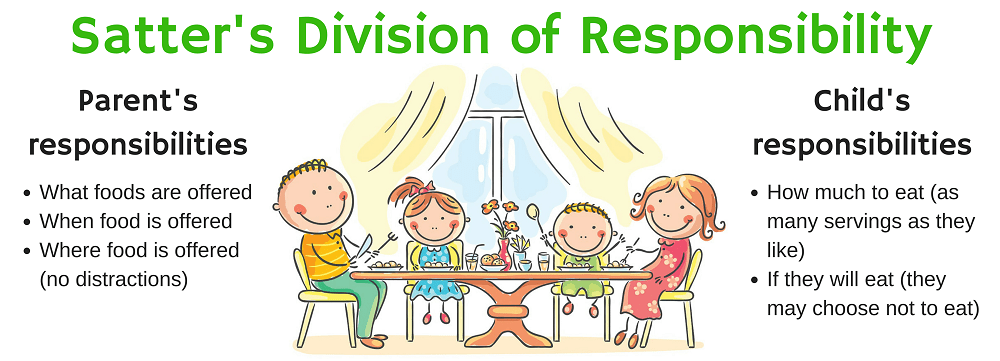
5 Ways to Help Picky Eaters become Adventurous
Do you have a picky eater? Are mealtimes a struggle? Do you feel like a short-order cook at the mercy of making WHATEVER your little one will eat? Are you tired of eating “kid-foods” and wish your child was not so darn picky!? If you said yes to any of these questions, you are not alone. In fact, up to 35% of parents describe their children as picky (Dietitians of Canada, 2017). This statistic is not to sound alarm but to inspire us to support our kids to improve their eating confidence so they can develop a healthy (and positive) relationship with food as they grow.
Today, I will share my top five strategies to help picky eaters become more adventurous. Keep in mind, your child may not transform overnight; however, by keeping a consistent (and positive) approach, you can encourage your child to feel safe and supported as they explore new foods, when they are ready.
DYK: Up to 35% of parents describe their children as picky (Dietitians of Canada, 2017) Click To Tweet-
Whose Job is it Anyway?
When it comes to child feeding, the golden rule is known as the Division of Responsibility. This is a principle highlighted by child feeding expert and registered dietitian, Ellyn Satter.
What is the “Division of Responsibility”?
The parent is responsible for what foods are served, when and where meals or snacks take place.
The child is responsible for how much and whether to eat.
Points to Ponder: Simply put, it is the parent’s job to feed and the child’s job to eat (or not eat if they choose). Parent and child roles often get blurred when the child starts dictating the what for meals, leading parents to feel like short order cooks. Conversely, parents often step into the child’s role when they try to convince or coerce their child to eat certain foods. By respecting your role within the division of responsibility you can encourage your little one to try new foods while respecting their autonomy to decline. If you are in need of comprehensive books on picky eating, check out the collection by Ellyn Satter.
-
Make ONLY One Meal (but include familiar favourites):
This tip will free the short-order cook and give you permission to make ONLY one meal. After all, you are in charge of the “what” for meals and your child can decide what they would like to eat from the foods being offered. To decrease the stress of the new food offered, always pair a new food with a familiar/accepted food – for example, if carrots are already enjoyed include these along with peas, which may be new. You can also offer one or two food items that child always accepts (ie. bread and milk) along with your chicken casserole. Allow your child to choose to eat what he likes from the foods that are offered.
Points to Ponder: Be consistent with this strategy so that your child will respect your role, as parent, is to decide what foods are provided. Common concerns include parents who are petrified that their child will starve if they don’t cater to their demands. I assure you, your child will NOT starve themselves. However, they are smart enough to try their best to direct you to make their favourite foods if you oblige. Remember that making different foods for your child enables their behaviour and teaches them that they do not have to try different foods because they can request a different option.
-
Have a “Happy Meal”:
I’m not suggesting you go to McDonalds, but instead notice the mood at meal times. Are you feeling stressed, frustrated or uptight? Your child will pick up on your feelings and will actually eat better if the mealtime is calm and pleasant. Additionally, not pressuring your child to eat supports the division of responsibility and leads to a more positive eating experience. Parents don’t need to worry, or show their frustration when a food is refused (more on this below). By keeping the mood upbeat, this will allow for an open invitation to try the foods when your child feels ready.
Points to ponder: You are a role model, which means you play the most powerful role in shaping your child’s feelings about food and eating. Dieting behaviour tends to be passed along when children notice their parents restricting or binging. If you feel like you do not have a positive relationship with food and you worry this is being passed along to your child, it might be a good idea to seek support from a specialized therapist or a dietitian.
Keep mealtimemood upbeat, to allow an open invitation to try the foods when your child isready. Click To Tweet-
Respect Hunger Signals
Children are fantastic at “self-regulating” or eating as much as they need to in order to feel full. Simply put, they eat when they are hungry and they stop eating when they are full. By encouraging your child to eat the amounts that they want, you are demonstrating the importance of listening to their body. Intuitive eating or listening to our body to guide our intake is a skill that we often lose as we age, making it easy to over-eat.
Points to Ponder: Children will eat more or less depending on their growth and activity. Trust your child when he or she says she is full and respect this. No clean plates needed, you can pack up leftovers. However, ensure that there is a meal and snack schedule to prevent your child from filling up on juice or snacks before mealtimes.
-
Try, Try Again
It can take up to 15 times for a child to like a new food. Therefore, don’t give up! Continue to offer new foods in different ways. This will help to encourage your child to be a more adventurous eater when foods are offered again, without pressure. I find parents are often pleasantly surprised when children start eating new foods as soon as the pressure is off and the parent is role modeling enjoying the new food. If you are adding a new food to a sauce or pizza, you can invite the child to pick veggies out if they choose, or they can try them out. However, there is not a different option made.
Points to ponder: If your child says no or does not like a new food, do not sweat it. Be sure to not avoid this food but instead try it again, and again…. and again. By offering foods and not judging if the food is refused, you will help your child feel safe, which is necessary in order to build food confidence needed to be an adventurous eater.
If your child says no or does not like a new food, do not sweat it Click To TweetBottom Line:
Picky eating is very common and not to be feared. Parents can support their children become more adventurous by following the Division of Responsibility, making only one meal option, having a positive eating environment, respecting hunger cues and providing foods again in a non-judgmental and supportive environment. Enjoy your family meals and remember your attitude and approach at meals will shape your child’s feelings towards food as well. Help kids feel respected and loved while they set out to try new foods.




